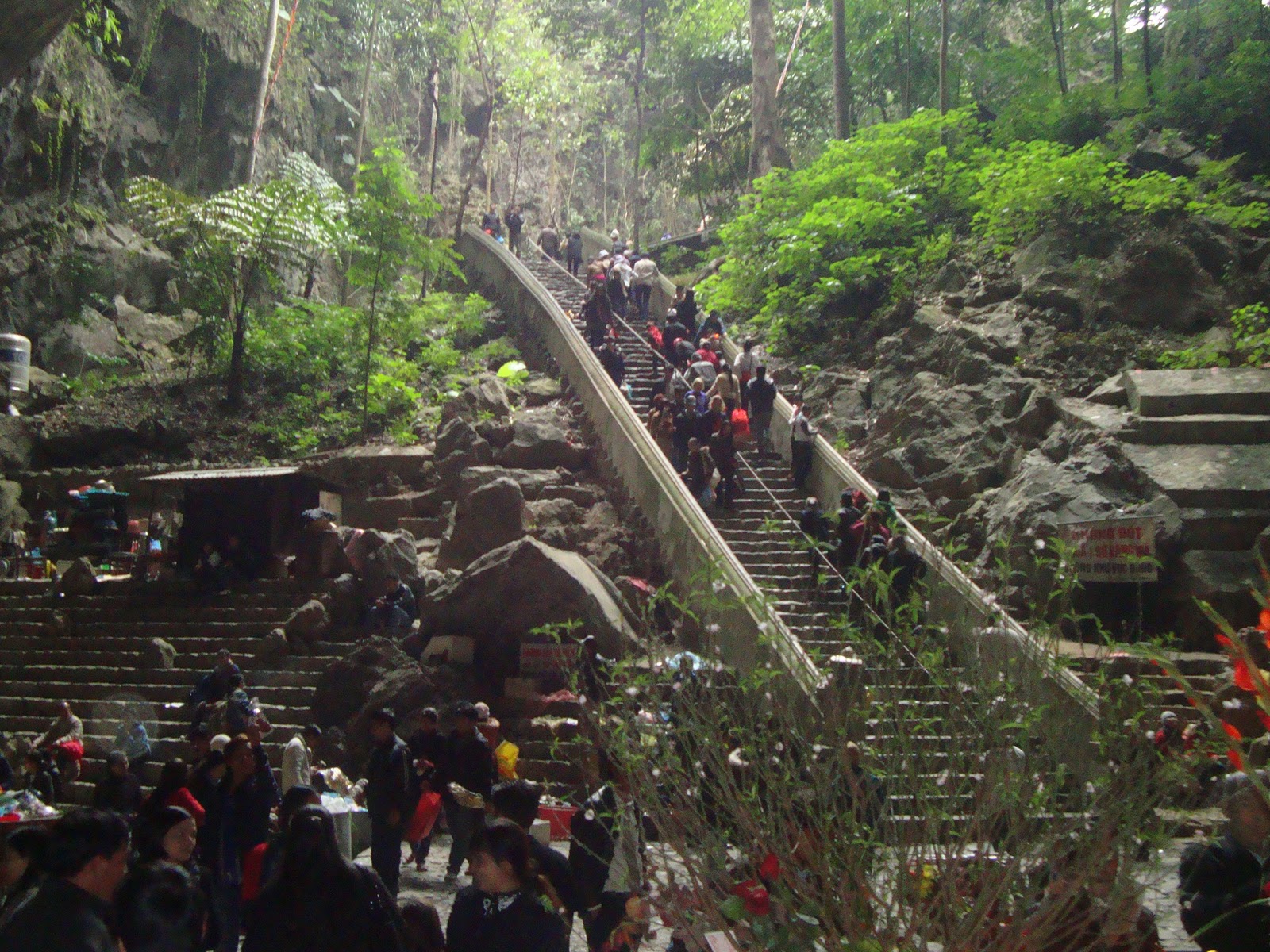There is pagoda called Huong Tich Pagoda inside. From Giai Oan pagoda, visitors would cross the journey of 2.5km to come to Huong Tich cave. Many parts of the journey are tortuous, sloping and tough.
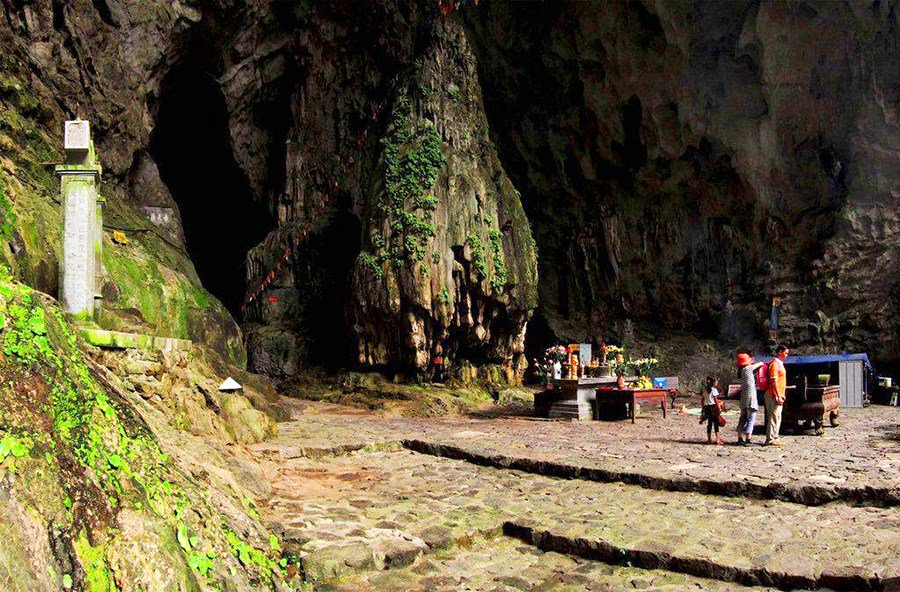
The closer to the cave, the higher the slope is. Coming to the highest stone case, visitors would see a large dome and deep like the jaw of a dragon, which is Huong Tich. The upper part has five big letters left by the Trinh Sam Lord: Most beautiful cave in South.
Crossing the entrance, going down for 120 stone steps, there is the inner part of the cave. In the middle part, there is a stalactite called rice hill. Coming a bit deeper, there is a way to the heaven, and a way to the hell. There are different size and shapes of the stalactites in the cave with many names. Beside those natural carving statues, there are artificial carving monuments. The most valuable one is the statue of avalokiteśvara, which is carved by the green marble in Tay Son time.
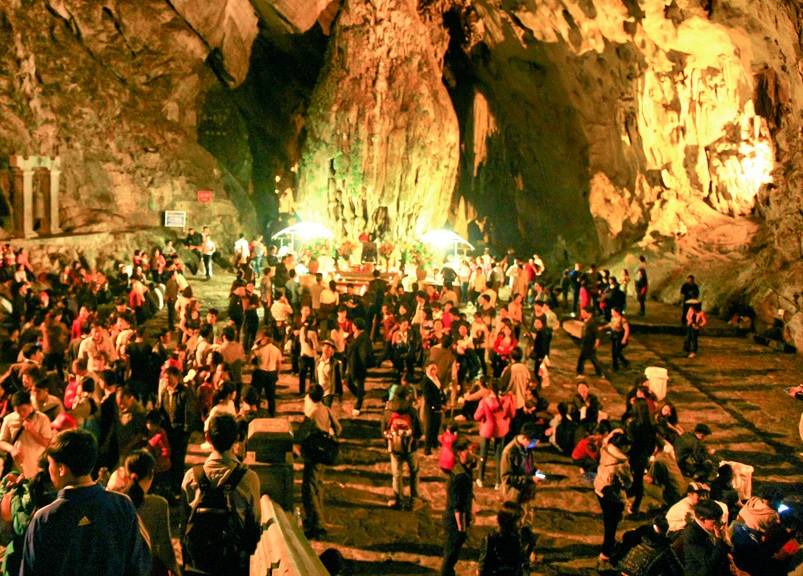
Huong Tich was like the big dragon jaw with the balance in every sides. The stalactite with the name of Dun Gao in the middle of the entrance, which looks like the tongue, and mouth of the dragon. Coming deeper would be the throat of the dragon. In the cave, stalactites are on the ceiling and from the floor with many real objects. Those are mother pig, baby pigs, pomelo, etc.
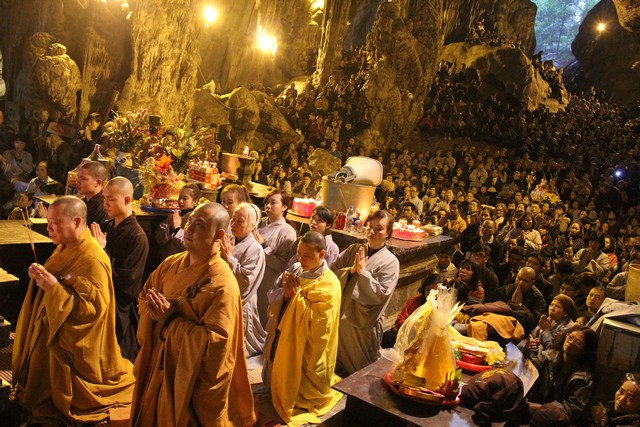
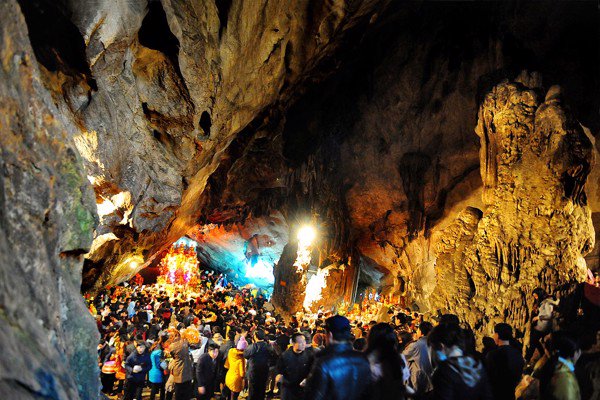
Huong Tich has become the biggest honoring place for Buddha of Huong pagoda. Coming to the festival of Huong pagoda, you have to come to this cave. There are many precious statures especially the statue of avalokiteśvara in green marble, which is made since 1793. It was made by the official named Nguyen Huy Nhat. In the festival season of the first lunar month, Huong Tich cave is always full of fragrance and perfume incense sticks and the sounds of pilgrim visitors.
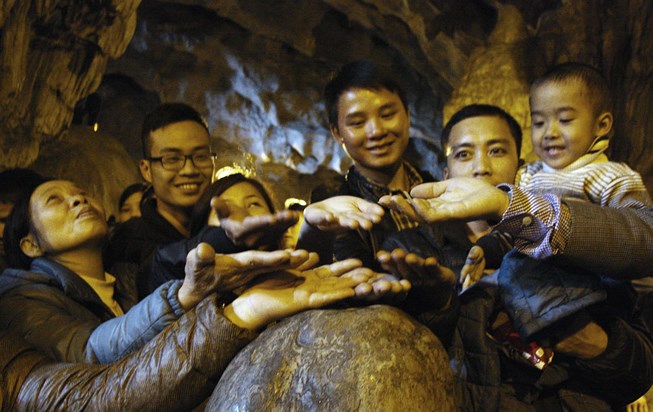
According to VietKings (Kyluc.vn)


